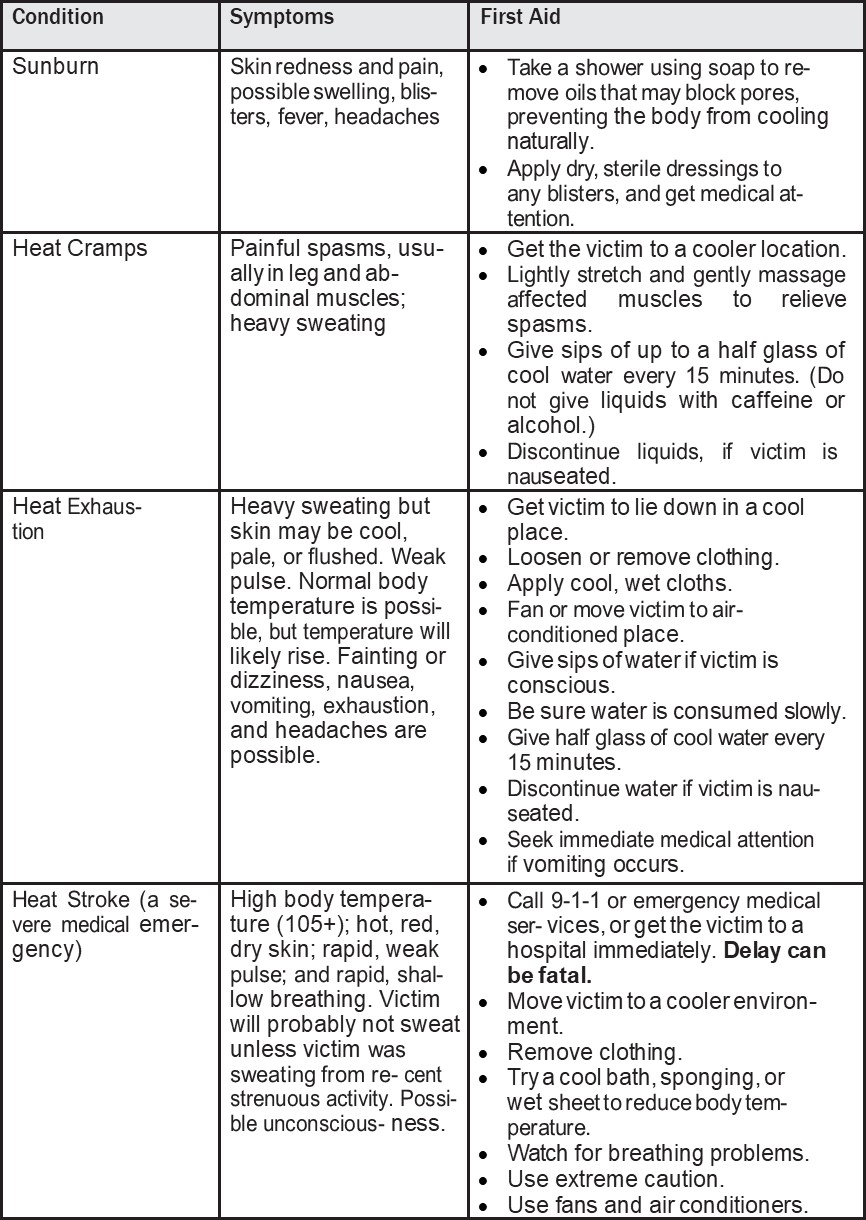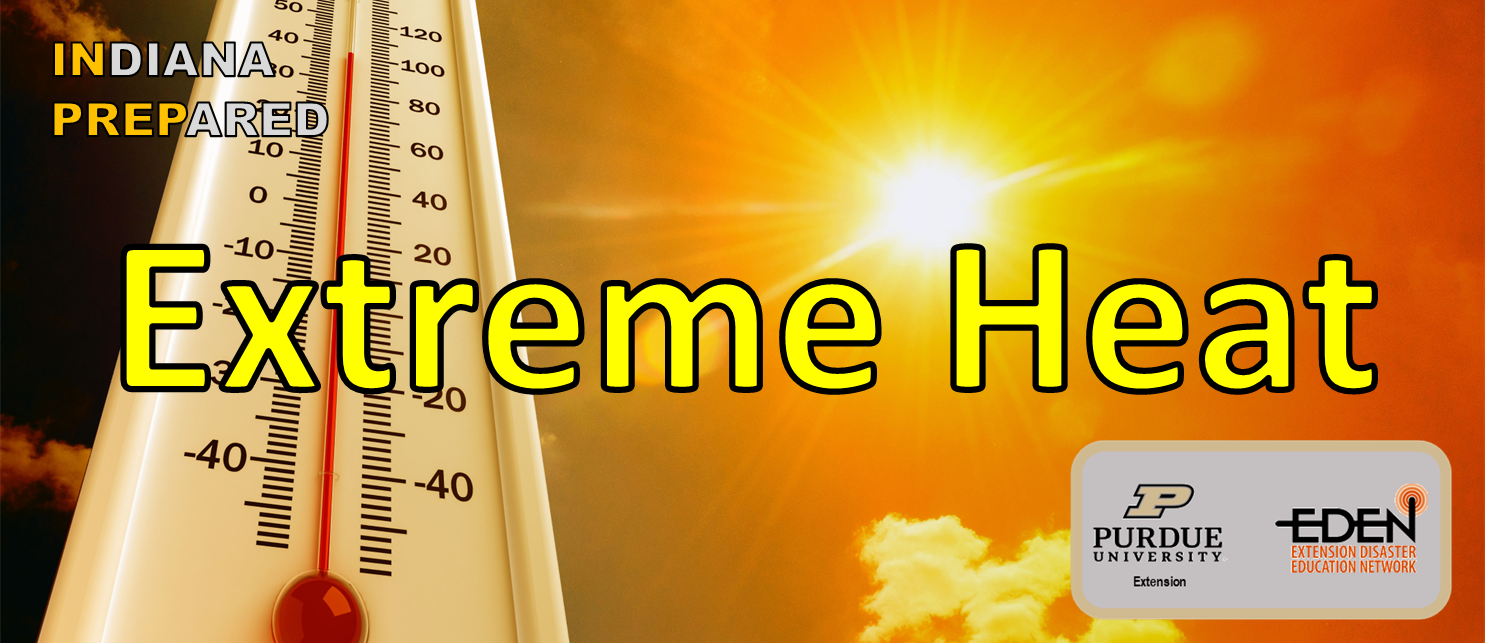Overview of Extreme Heat Hazards
Heat kills by pushing the human body beyond its limits. In extreme heat and high humidity, evaporation is slowed and the body must work extra hard to maintain a normal temperature.
Most heat disorders occur because the victim has been overexposed to heat or has over-exercised for his or her age and physical condition. Older adults, young children, and those who are sick or overweight are more likely to succumb to extreme heat.
Conditions that can induce heat-related illnesses include stagnant atmospheric conditions and poor air quality. Consequently, people living in urban areas may be at greater risk from the effects of a prolonged heat wave than those living in rural areas. Also, asphalt and concrete store heat longer and gradually release heat at night, which can produce higher nighttime temperatures known as the “urban heat island effect.
Key Terms
- HEAT WAVE: Prolonged period of excessive heat, often combined with excessive humidity.
- HEAT INDEX: A number in degrees Fahrenheit (F) that tells how hot it feels when relative humidity is added to the air temperature. Exposure to full sunshine can increase the heat index by 15 degrees.
- HEAT CRAMPS: Muscular pains and spasms due to heavy exertion. Although heat cramps are the least severe, they are often the first signal that the body is having trouble with the heat.
- HEAT EXHAUSTION: Typically occurs when people exercise heavily or work in a hot, humid place where body fluids are lost through heavy sweating. Blood flow to the skin increases, causing blood flow to decrease to the vital organs. This results in a form of mild shock. If not treated, the victim’s condition will worsen. Body temperature will keep rising and the victim may suffer heat stroke.
- HEAT STROKE: A life-threatening condition. The victim’s temperature control system, which produces sweating to cool the body, stops working. The body temperature can rise so high that brain damage and death may result if the body is not cooled quickly.
- SUN STROKE: Another term for heat stroke.
Take Protective Measures
To prepare for extreme heat, you should:
- Install window air conditioners snugly; insulate if necessary.
- Check air-conditioning ducts for proper insulation.
- Install temporary window reflectors (for use between windows and drapes), such as aluminum foil covered cardboard, to reflect heat back outside.
- Weather-strip doors and sills to keep cool air in.
During a Heat Emergency
The following are guidelines for what you should do if the weather is extremely hot:
- Stay indoors as much as possible and limit exposure to the sun.
- Stay on the lowest fl oor out of the sunshine if air conditioning is not available.
- Consider spending the warmest part of the day in public buildings such as libraries, schools, movie theaters, shopping malls, and other community facilities. Circulating air can cool the body by increasing the perspiration rate of evaporation.
- Eat well-balanced, light, and regular meals. Avoid using salt tablets unless directed to do so by a physician.
- Drink plenty of water. Persons who have epilepsy or heart, kidney, or liver disease; are on fluid-restricted diets; or have a problem with fluid retention should consult a doctor before increasing liquid intake.
- Limit intake of alcoholic beverages.
- Dress in loose-fitting, lightweight, and light-colored clothes that cover as much skin as possible.
- Protect face and head by wearing a wide-brimmed hat.
- Check on family, friends, and neighbors who do not have air conditioning and who spend much of their time alone.
- Never leave children or pets alone in closed vehicles.
- Avoid strenuous work during the warmest part of the day. Use a buddy system when working in extreme heat, and take frequent breaks.
First Aid for Heat-Induced Illnesses
Extreme heat brings with it the possibility of heat-induced illnesses. The following table lists these illnesses, their symptoms, and the first aid treatment.

Additional Resources
If you need more information contact: inprepared@purdue.edu.
© 2025 Purdue University | An equal access, equal opportunity university
615 West State Street, West Lafayette, IN 47907-2053
If you have trouble accessing this page because of a disability, please email us at inprepared@purdue.edu.



